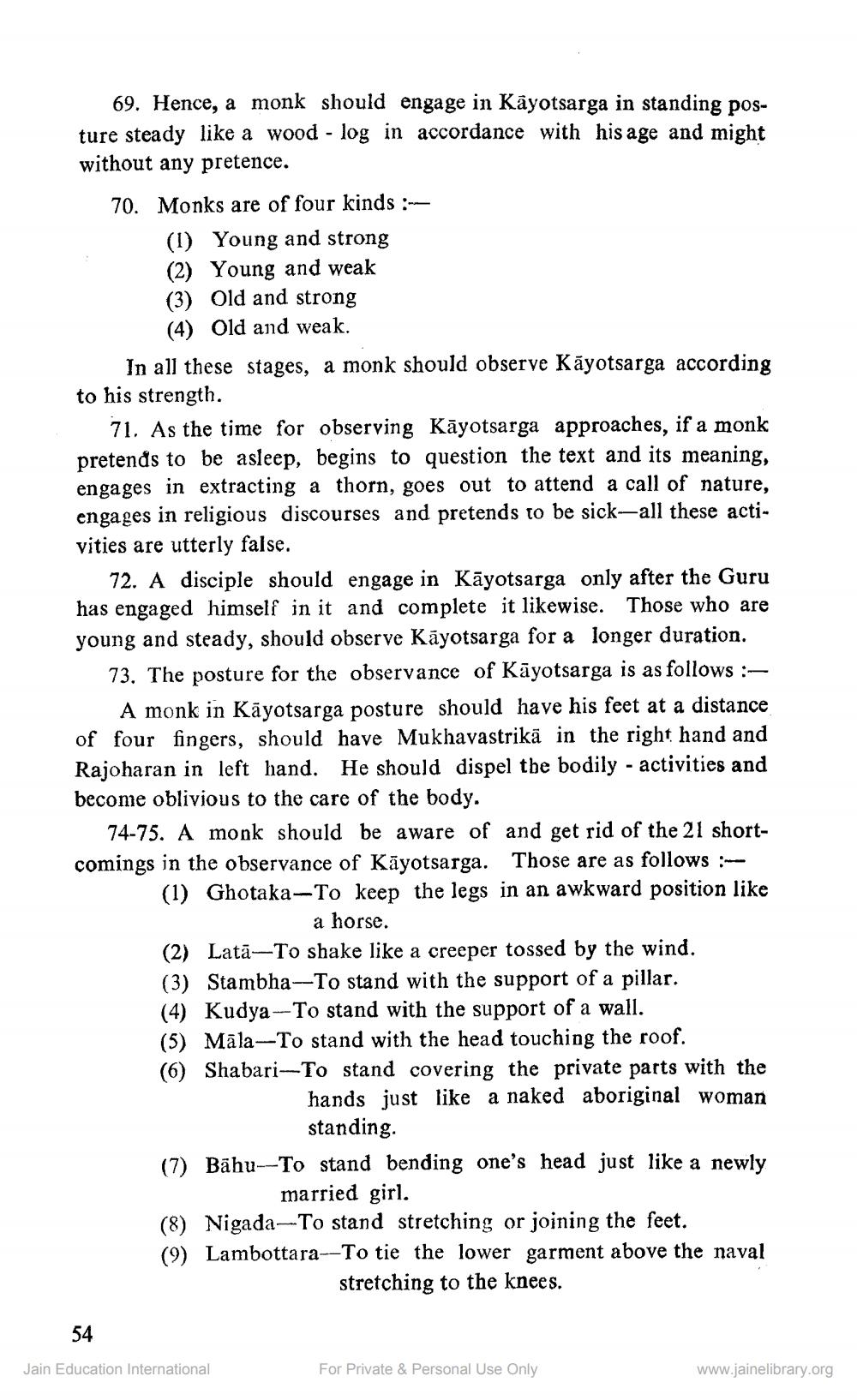________________
69. Hence, a monk should engage in Kâyotsarga in standing posture steady like a wood - log in accordance with his age and might without any pretence. 70. Monks are of four kinds :
(1) Young and strong (2) Young and weak (3) Old and strong
(4) Old and weak. In all these stages, a monk should observe Kāyotsarga according to his strength.
71. As the time for observing Kāyotsarga approaches, if a monk pretends to be asleep, begins to question the text and its meaning, engages in extracting a thorn, goes out to attend a call of nature, engages in religious discourses and pretends to be sick-all these vities are utterly false.
72. A disciple should engage in Kāyotsarga only after the Guru has engaged himself in it and complete it likewise. Those who are young and steady, should observe Kāyotsarga for a longer duration.
73. The posture for the observance of Kāyotsarga is as follows :
A monk in Kāyotsarga posture should have his feet at a distance of four fingers, should have Mukhavastrikā in the right hand and Rajoharan in left hand. He should dispel the bodily - activities and become oblivious to the care of the body.
74-75. A monk should be aware of and get rid of the 21 shortcomings in the observance of Kāyotsarga. Those are as follows :(1) Ghotaka–To keep the legs in an awkward position like
a horse. (2) Latā—To shake like a creeper tossed by the wind. (3) Stambha-To stand with the support of a pillar. (4) Kudya---To stand with the support of a wall. (5) Māla-To stand with the head touching the roof. (6) Shabari-To stand covering the private parts with the
hands just like a naked aboriginal woman
standing. (7) Bāhu-To stand bending one's head just like a newly
married girl. (8) Nigada-To stand stretching or joining the feet. (9) Lambottara--To tie the lower garment above the naval
stretching to the knees.
54
Jain Education International
For Private & Personal Use Only
www.jainelibrary.org




